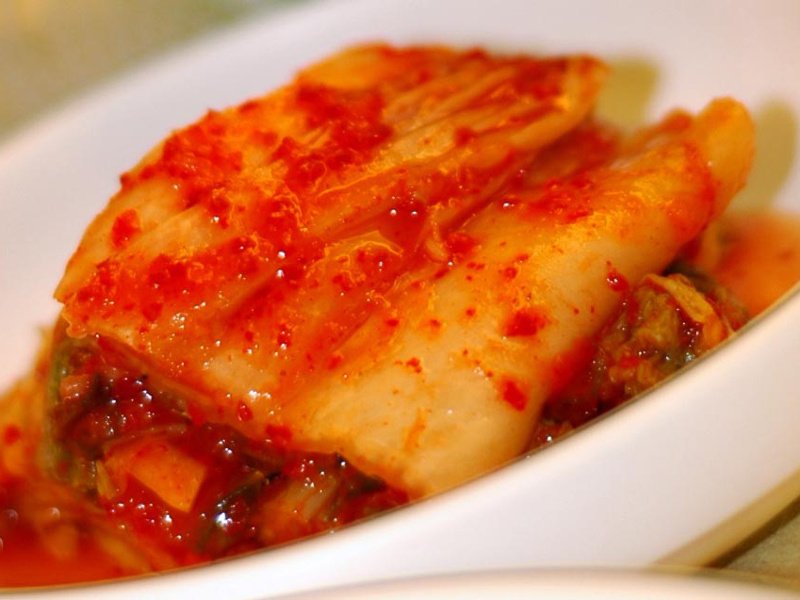Kimchi, a strongly flavored, odoriferous cabbage pickle, is one of the bedrocks of Korean cuisine. Kimchi is served as a side dish for almost every Korean meal and is also used in stir-fries, soups and stews.
Koreans have been salting vegetables in one form or another for over one thousand years as a way of preserving the harvest to last through the hard Korean winters. Late fall is kimchi-making season, or Kimjang, when great quantities of pickled vegetables are placed in large ceramic pots and buried in the ground to ferment.
Baechu kimchi, using Chinese or Napa cabbage, is the most common type of Korean pickled vegetables. But hundreds of types of kimchi using different vegetables are made, and each family has its own favorite recipe.
Ingredients
- Chinese cabbage, outer leaves removed, cut into 1-inch squares — 1 head, or 2 1/2 to 3 pounds
- Kosher or sea salt — 1/3 cup
- Scallions, finely chopped — 4 to 6
- Garlic, minced — 2 to 4 cloves
- Ginger, minced — 1 tablespoon
- Korean chili flakes — 4 to 6 tablespoons
- Sugar — 1 tablespoon
Method
- Add the cabbage and salt to a large glass or plastic bowl and toss together well with clean hands. Cover with plastic wrap and set aside for 1 to 1 1/2 hours.
- Place the cabbage, which should now be soft, in a colander. Rinse out the bowl and then rinse the cabbage well with water. Squeeze out excess water and return cabbage to the bowl. This step removes excess salt.
- Add the remaining ingredients and stir together with a wooden spoon. Place into a large, clean glass or plastic crock, container or jar and tamp down to remove any air bubbles. Cover with a lid and let set in a cool, dark place for 2 or 3 days. While fermenting the kimchi gives off carbon dioxide, and you may need to open the container lids periodically to relieve pressure.
- Transfer to a new container and store refrigerated for up to two weeks.
Kimchi Variations
- Kkakdugi Kimchi (Daikon pickle): Use 2 to 3 pounds of daikon radish instead of cabbage. Peel, cut into 1-inch squares and follow the same procedure.
- Seafood: In Korea pieces of seafood such as oysters, anchovies or salted shrimp are often added to the kimchi to give it a rounder, more pungent flavor. Try adding 2 to 3 tablespoons of ground dried shrimp if you like. Or you can add 1 tablespoon of kimchi sauce, which can be bought at many Asian markets.
- Seasonings: Apart from the amount of salt, you can vary the amount of seasonings according to your taste. There really isn’t a good substitute for Korean chili flakes. Some people recommend cayenne or red pepper flakes, but the flavor isn’t really the same. If you must, add 1 to 2 tablespoons of paprika to give added flavor and color.
- Kimchi stored past 1 or 2 weeks gets softer and more pungent and is good in soup and stews.










